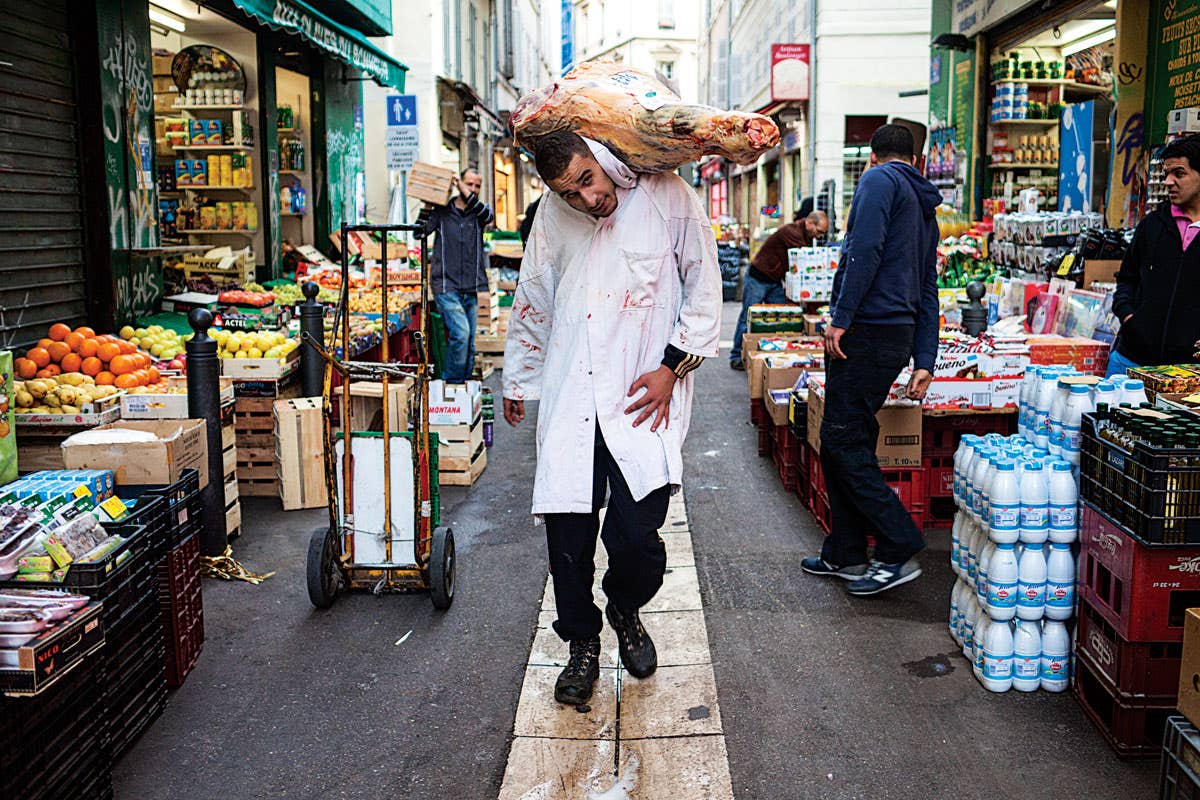
City by the Sea
A new generation of chefs builds on the rich culinary legacy of the French port of Marseille
Wrapped in a wispy paper bag, the warm navettes in the crook of my arm felt good against my chest on a recent damp winter day in Marseille. The wheat flour wants and their orange-flower perfume suggested worlds once unknown to me, a reminder of the first time I inhaled their scent 30 years ago. I was a college student tramping through Europe with three friends, and I fell in love with this gruff, big-hearted mutt of a city the moment I stepped off the train at the Gare Saint-Charles.
I was awed by the station's soaring cast-iron and glass canopy and by the pair of stone lions at the top of the monumental white staircase that greeted us as we emerged. The tall wooden shutters of my spartan shared hotel room cast long piano keys of light and shade on the opposite wall, and a lazy breeze smelled of turmeric, cumin, and mint.
On the sidewalk below, men in long brown robes and lacy white skullcaps sat in a café drinking glasses of hot tea, and many of the Sunday-silenced storefronts across the street withheld the nature of their commerce behind exuberant signs of Arabic script. “I wonder where all of these people came from?” asked one of my friends. The not-that-distant convulsions caused by France's abruptly expired North African colonial empire were beyond us well-fed kids from the American suburbs, as were most of the other European realities that made history anything more than a time line.
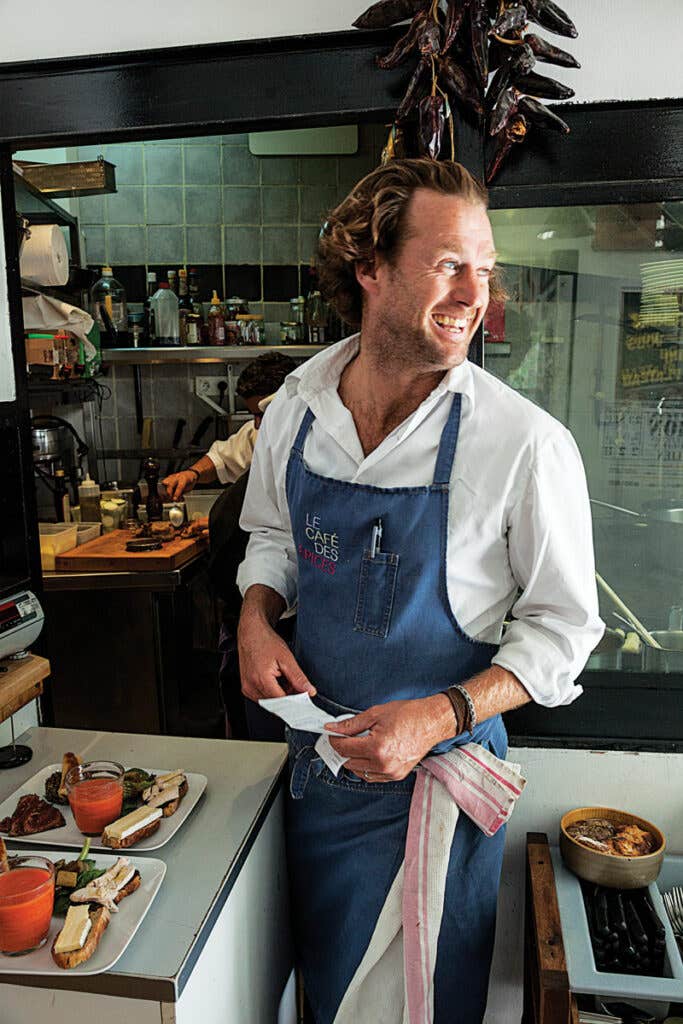
I learned later that the 1970s had been tough for Marseille. As its port traffic collapsed and factories closed, much of the city's bourgeoisie decamped to nearby Aix-en-Provence. The city acquired a crime-tarnished reputation that deepened the tourism slump that had begun when France's North African colonies became independent, and the hundreds of thousands of French colonials who used to summer in Marseille could no longer easily visit the city. In fact, the only way we'd ended up in the city my dog-eared guidebook described as “fairly menacing” was by leaving it to chance and flipping a coin. Two nights max, we said.
We headed to Le Four des Navettes, which was founded in 1781, because my guidebook claimed the navette cookies offered a "unique taste of Marseille" and explained they were named after an unmanned boat that miraculously arrived in the port during the 13th century bearing a wooden statue of the Virgin Mary. I blasphemously thought of them as the Mediterranean equivalent of Nilla wafers, but I loved the bluff nonchalance with which this fabled shop went about its business. Elsewhere in France, famous bakeries were tarted up for tourists with prices to match, but this was a neighborhood spot where the cashier flirted with bakers in floury T-shirts, and old ladies with sturdy thighs and wire shopping caddies stopped in for a baguette. Marseille's lack of glamour charmed me.
And unlike the other great ports of Europe, this city hadn't lost all of its brawny allure since the fascinating business of loading and unloading people and goods was removed from the center city to distant dockyards. Marseille still had buckets of what the French call de la gueule, or character, and this is what seduced me the day I arrived with the desperate desire to exchange the sea I'd grown up on—the cold, dark green waters of Long Island Sound—for the storied shores of the Mediterranean. I came from a New England glade with a gilded zip code, but I had an instinctive loathing for any place that was too safe, clean, or pretty.
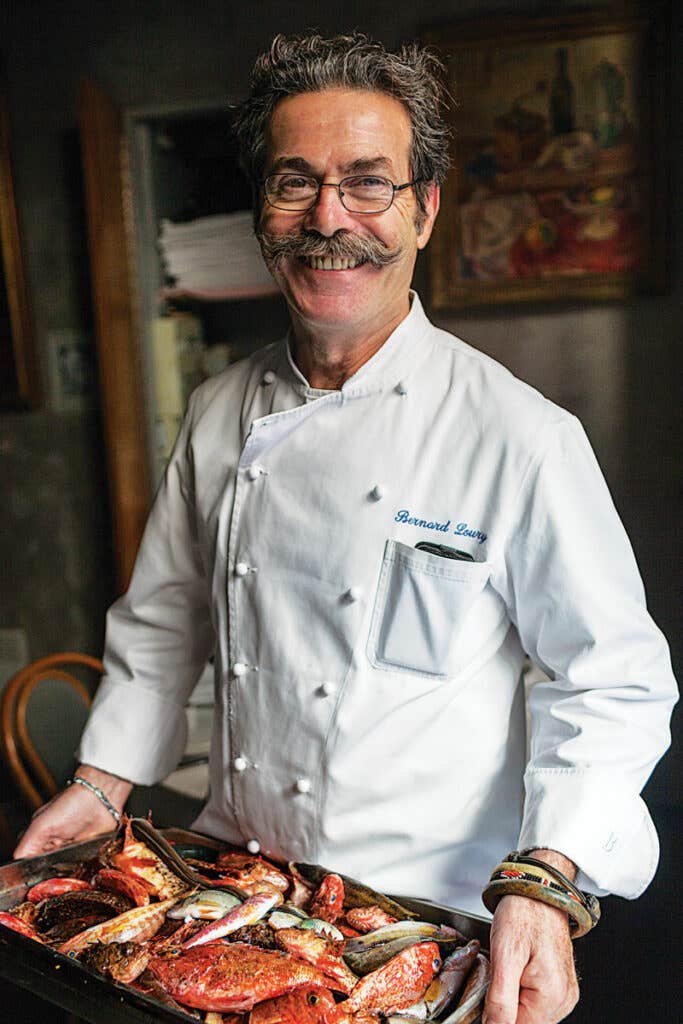
That first day, as I aimlessly followed the crowd off La Canebière, Marseille's gritty main drag, and up a market street with cabbage leaves and smashed oranges in the gutter, it struck me as both sad and funny that such expense and effort had gone into keeping me at arm's length from everything I yearned for—color and chaos, spontaneity and sensuality.
The following morning, I fumbled in bad French at our hotel's front desk asking if any nearby restaurants were open for lunch. The young med student with the black-frame glasses answered me in the perfect English he said he'd learned from watching episodes of Bewitched in his native Morocco. "Go to Chez Aisha for couscous méchoui," he said. None of us knew what couscous was, but when Aisha came through the curtain of softly rattling beads from the kitchen with a steel platter of fluffy almond-color semolina draped with tender crusted chunks of roasted lamb, we all recognized a feast.
I spent the next couple of days happily entranced, exploring the city one meal at a time on my limited budget. I loved it all: the famous pizza at Chez Etienne, a clubby hole-in-the-wall in Le Panier, the city's oldest quartier; the lusty flavors at Chez Vincent, an old-line Marseillais-Sicilian restaurant, where the owner, Rose Suggello, fed us garlicky fire-blistered red peppers and the best liver I'd ever eaten.
For a splurge, I cashed the emergency traveler's check my grandmother had given me so that we could eat Marseille's most iconic dish, bouillabaisse. The saffron-laced fish stew and its lesser-known relative, bourride, have their roots in the discards of the catch, chucked into the pots of hungry mariners returning to port. But we ate ours at Le Miramar, then the grandest restaurant in Marseille and a place where haughty waiters took a dim view of students whose idea of dressing up was a clean shirt and Levi's.
Interwoven with these tastes of classic Marseille were my first tastes of lahmajoon, a delicious pizzalike Armenian flatbread, and my first grilled sardines, which I ate with a stubby glass of rosé in a smoky room full of mostly mustached men watching a soccer match. At each meal, I felt a deepening connection to the city. I fit in because I didn't fit in, just like almost everyone else in Marseille. By the time I awoke to the local muezzin's call to prayer the next dawn, I was besotted.
Little did I know how much that college trip to Europe was foreshadowing my future. I went on to become a food writer, traveling regularly in France and other European countries to write about what I ate. For the past 27 years, I've lived in Paris, but I've carried a torch for Marseille. It's far less celebrated for its cuisine, but its deep history as a port city gives it a singular wealth of influences—that riot of different kitchens that seduced me on my first visit—to draw on.
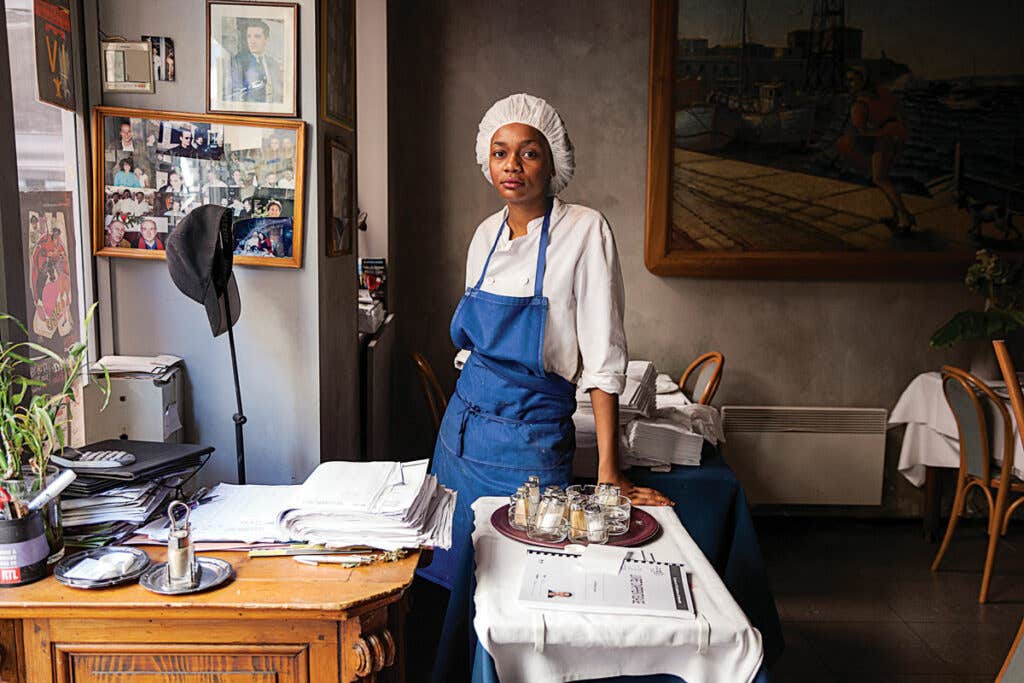
One of Europe's oldest ports, founded by the Greeks in 600 B.C., Marseille has always attracted wayfarers, traders, and exiles. After the Suez Canal opened in 1869, the city boomed as the main port for France's burgeoning colonial empire and for a time shared with Chicago the title of world's fastest-growing city. Today, most Marseillais are Franco-hyphen-something. Much of its population of 850,000 (it's France's second-largest city) has Italian roots. They're joined by one of the largest Jewish communities in Europe, France's second-largest Armenian population, one of the largest North African communities in Europe, and thousands of people of Corsican, Greek, Spanish, and Russian ancestry. Every generation of immigrants contributed new dishes and seasonings to the city's culinary repertoire: Algerians and Tunisians brought rich tagines, merguez, and couscous, broadening the Marseillais pantry with ingredients from the spice trail. The Italians brought pizza and the Spanish developed the city's taste for expensive saffron in its signature bouillabaisse. The latest wave of newcomers are young professionals, including chefs attracted to the city for the richness of its Mediterranean influences and the region's phenomenal ingredients to support those influences. Today, Marseille's dining scene is maturing, drawing from centuries of diversity to go far beyond the rustic, hearty food that sated my young appetite; the city is evolving into one of the most interesting dining destinations in France.
Pan-Fried Eggplant with Balsamic, Basil, and Capers
Creamy, mild eggplant pairs with briny capers, floral basil, and a drizzle of balsamic reduction for a knockout appetizer or side dish. Get the recipe for Pan-Fried Eggplant with Balsamic, Basil, and Capers »
Le grain de sel exemplifies this new wave. A simple bistro with polished cement floors and a menu that changes daily, it has become one of my favorite restaurants in Marseille. On a recent visit to the city, I stopped in for lunch. I ate the daily specials: a casserole of shell-shape pasta with baby clams that had leaked their sweet juices into a silky tomato sauce, and a sauté of squid, chorizo, and baby artichokes. Light and sophisticated, this was modern Marseille market cooking at its best. I asked the waiter so many questions that he brought out the chef.
Pierre Giannetti, a native of nearby Martigues, told me he worked in Barcelona for several years and did a stint at El Bulli but came home because he loves Marseille's polyglot makeup, particularly now that attitudes have become more cosmopolitan. “In the past people stuck to their own tribe, but the city's new social mobility has had a big impact on restaurants. We've all eaten each other's food,” Giannetti said.
I went that night to dinner at Le Bistrot d'Edouard, a terrific restaurant that chef Edouard Giribone opened in an old provençal-style house in the city's affluent Prado neighborhood four years ago. While waiting for my table, I tucked into an excellent tapa at the bar—meaty eggplant with balsamic vinegar, capers, and basil—and fell into conversation with the friendly couple standing next to me. Marseille natives, they'd moved back after ten years in Paris for the quality of life here. The city had become cleaner, safer, and more prosperous than it was when they left, they said.
After sampling Giribone's superb bouillabaisse, its deeply flavored broth shot through with saffron and licorice-y pastis, I chatted with him over a coffee in the garden. He explained how the generational change in Marseille has carried over to its cuisine. “The younger Marseillais are embracing the city's Mediterranean identity, which used to embarrass their parents, either because they were trying to distance themselves from immigrant origins or because they'd bought into the bourgeois myth of the north as being superior,” Giribone said. For chefs, he explained, this means there's a new clientele open to inventive contemporary French cooking but with a strong southern accent.
The more I eat in Marseilles, the more apparent it becomes that the city is adding a new layer of restaurants to its culinary geology. And, unlike some of the old-guard restaurants, the new Marseille is refreshingly allergic to both pretension and formality. I shared the story of my first bouillabaisse with the grandly named chef Arnaud Carton de Grammont after a very good lunch at Le Café des Epices, a casual little place where I feasted on au courant dishes like marinated organic leeks with a slice of homemade mushroom cake, and sole with quinoa and plenty of Mediterranean vegetables—tomatoes, zucchini, green beans.
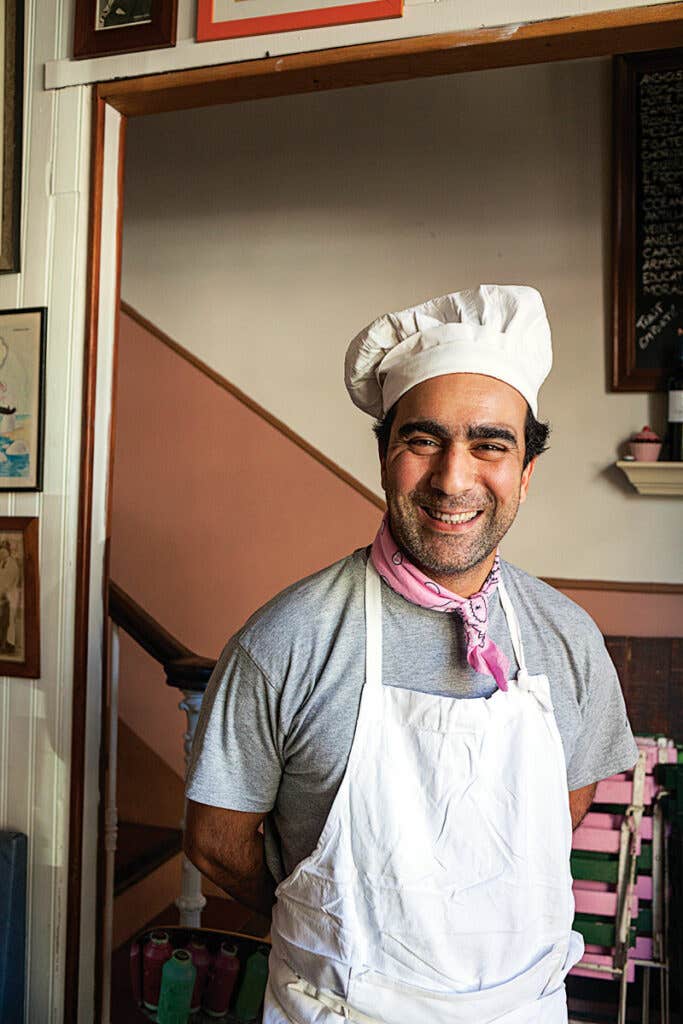
The chef just shook his head. “Bouillabaisse is the curse of any cook in Marseille! It's rarely good in restaurants, but it's what tourists want,” he said. “But today, we're moving on from that stereotype.”
Sicilians and Corsicans came to work in the port, drawn by the city's flour mills and soap factories; chefs are choosing Marseille for its character. Lionel Lévy, chef at Alcyone, the elegant restaurant at the new Intercontinental Hotel in the magnificent 18th-century Hotel Dieu, a former hospital, described Marseille as "a big window on the south; it inspires us constantly." That inspiration is clear in bright dishes where produce from the land meets that from the sea, yielding terre-mer pairings like a smoked roasted foie gras with French bottarga, and kombu-steamed fish with anchovy-fennel-bulb gratin.
By mating the culinary traditions of its amazingly diverse population with the Mediterranean's phenomenal seafood and produce, the young chefs of Marseille are taking these flavors further, placing this city on the starting block to becoming one of the great food towns of France. Even the old-school dishes like pizza and bouillabaisse are being reinvigorated. My affection for Marseille, grounded in those early memories of crisp navettes and couscous in a vivid poppy-color broth, grows with each visit to encompass new classics such as Chef Lévy's brilliant candied black olive clafoutis. How lucky I am that a fateful flip of a coin years ago caused me to follow this culinary revolution in a city I love.
Keep Reading
Continue to Next Story










